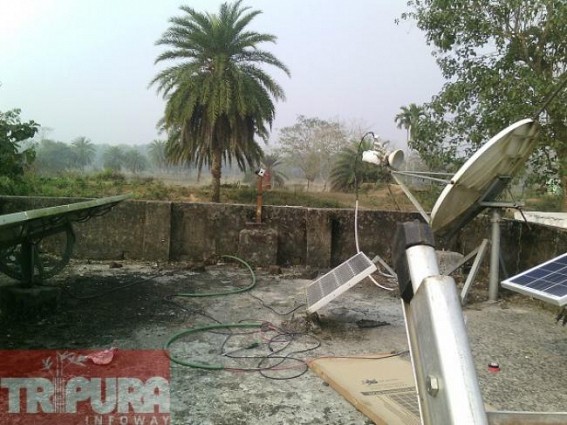TIWN

GUWAHATI /AGARTALA, Feb 3 (TIWN) : The Indian Meteorological Department (IMD) has setup a real time Seismic Telemetry Network in NE region, consisting of 21 Seismic field observatories spread in all the seven state of NE region. It will monitor natural disaster like earthquake in the seismologic ally active northeast region. Agartala Meterological Center and Belonia Dak Bungalow were the 2 nos Telemetry Station in Tripura.
It will monitor natural disaster like earthquake in the seismologic ally active northeast region.
The IMD has also set up a Central Receiving Station (CRS) at IMD headquarters at New Delhi and a Data Collection Centre at Central Seismological Observatory (CSO) at Shillong.
The ground motion data generated by the network will automatically transmit to CRS, Delhi.
An IMD statement said the new network will further strengthen efforts of real time monitoring of earthquake activity of the region and will enable to immediately inform about the epicentral parameters of an earthquake on occurrence of significant earthquake in the region, to all disaster management related authorities, through fastest mode of communications, such as SMS, FAX and e-mail.Northeast region of the India is one of the most seismically active regions of the world. It is placed in zone V, the highest zone, of the Seismic Zonation Map of India.
The region bounded by latitude 22–29°N and longitude 90–98°E lies at the junction of Himalayan arc to the north and Burmese arc to the east.The region has experienced 18 large earthquakes (M >7) during the last hundred years including the great earthquakes of Shillong (1897, M=8.7) and Assam-Tibet border (1950, M=8.7). Besides, several hundred small and micro earthquakes have also been recorded in the region and felt locally creating panic amongst the populace.
The high seismicity in the region is attributed to the collision of the Indian and the Eurasian plate in the north and seduction tectonics along the Indo-Myanmar range (IMR) in the east.
The Vulnerability Atlas of India prepared by the Building Materials and Technology Promotion Council (BMTPC), Ministry of Urban Development denotes that millions of houses of NE India region are in very high risk due to earthquake ground shaking.
However, the number of occurrences of earthquakes has remained fairly constant, but the risk to the life and damage to the property during the recent earthquakes has increased in manifolds due to the changing topography, increase in population and rapid unplanned urbanization.
For monitoring of earthquake occurring in NE India only Seven seismological Observatories (Shillong, Tura, Lekhpani, Gangtok, Imphal and Agartala,Belonia) are operating from North East India region and except Shillong other five observatories are equipped with old analog type equipment.
- Two Suspected Thieves Were Arrested in Udaipur’s Kakraban
- CT Scan Machine Remains Unfunctional at GB Hospital Trauma Center
- SPO and her Husband Booked in Tripura for Job Scams
- Ranji Trophy's 2019-20 Best All-Rounder Player Manishankar Murasingh Appointed as TTAADC Brand Ambassador
- Tripura Govt ‘Discussing’ Over High Court’s Recent Verdict Against Fixed Pay System: CM cites ‘Limited Resources’



